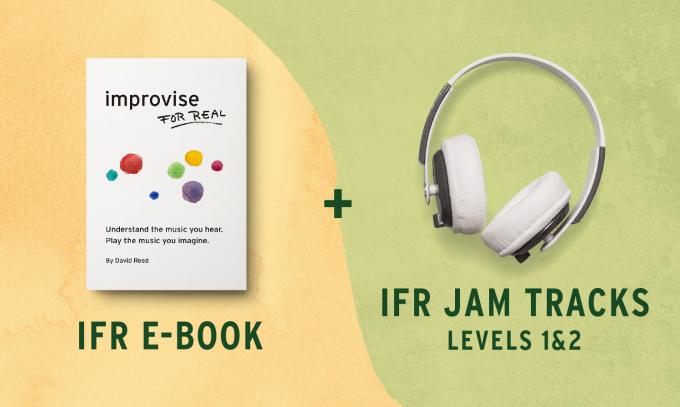Hello,
I enjoy the Improvise For Real method very much. Just wanted to ask, with pentatonic scales being so important in music around the world, and particularly loved by guitarists, how can we incorporate them into our practice?
Thanks,
Paul
David's response:
Hi Paul,
Great question! As you say, pentatonic scales are an important part of almost all musical cultures around the world. Pentatonic scales are also very beautiful material for soloing, and they can be used in a variety of surprising ways. The IFR Tonal Map makes it very easy to visualize and play these sounds in any key.
The two most important pentatonic scales are what people commonly call the “major pentatonic” and “minor pentatonic” scales. Curiously, both of these scales actually contain the exact same five notes. What this means is that the major and minor pentatonic scales are in fact just one single scale.
The notes that make up both of these scales are notes 1, 2, 3, 5 and 6 from your tonal map. The only difference between these two scales is the tonal center. When we’re feeling note 1 as the tonal center, these notes produce what we call the “major pentatonic” scale. When we’re feeling note 6 as the tonal center, these exact same notes produce what we call the “minor pentatonic” scale.
How to incorporate pentatonic scales in your IFR practice
The best place to start is with IFR Jam Tracks Level 1: Seven Worlds. Choose one of the backing tracks in the first harmonic environment (meaning that note 1 is the tonal center). Limit your improvising to just the notes 1, 2, 3, 5 and 6 on your tonal map. As your ear will recognize right away, this is the famous major pentatonic scale that you’ve been hearing and enjoying all your life.
Then to practice improvising with the minor pentatonic scale, all you have to do is select one of the backing tracks in the 6th harmonic environment. Continue improvising with just notes 1, 2, 3, 5 and 6, and you’ll hear how these exact same notes produce the dark and beautiful sounds of the minor pentatonic scale.
Once you’ve internalized these sounds and you’ve learned where to find them on your tonal map, you will always have this beautiful collection of sounds at your disposal. So even when you’re improvising over our more advanced jam tracks which include chord progressions, you can always create the enjoyable effect of pentatonic scales in your music whenever you want to.
This is a great example of how you can use the IFR tonal map concept to understand any musical idea and integrate it into your vision of the octave. Whenever you come across a musical sound or harmonic concept that you find especially interesting (a particular scale, a beautiful melody, a lick from another musician's solo, etc.), all you have to do is take a moment to clarify exactly which notes on your tonal map make up this musical idea. Then you will be able to access these same sounds in your own creative improvising, and you’ll be able to express these sounds effortlessly in any key on your instrument.
Happy jamming!
David

